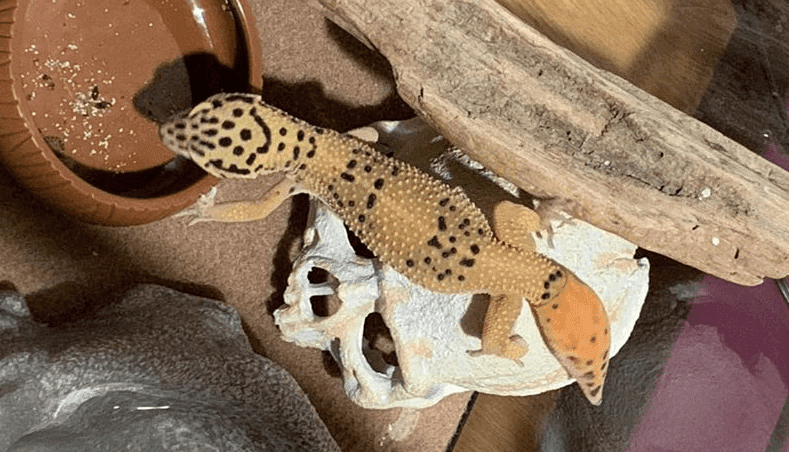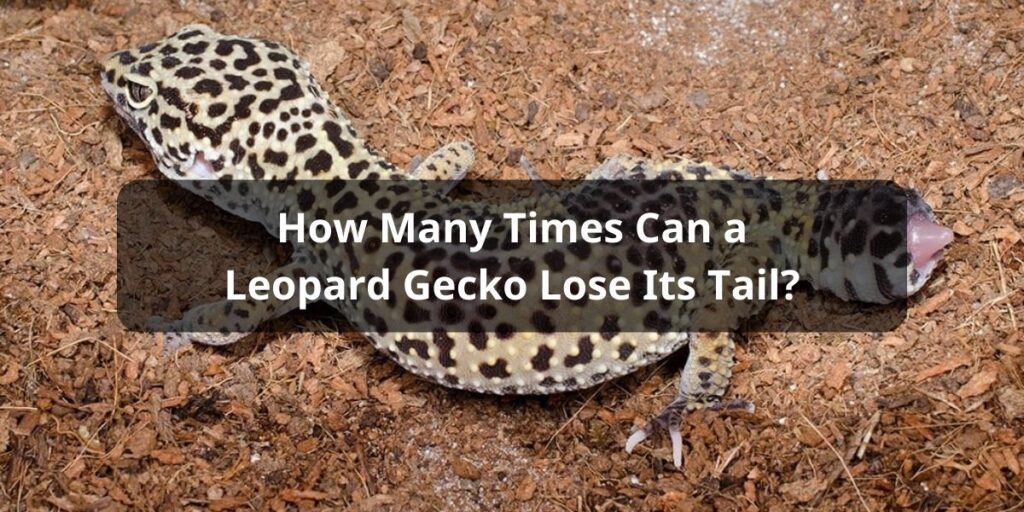Leopard geckos are fascinating creatures that have the ability to lose their tails and then regrow them. This defense mechanism, called autonomy, allows leopard geckos to detach their tails if attacked by predators in the wild. It leaves the predator with just the tail while the gecko makes its escape. But just how many times can a leopard gecko lose and regrow its tail over its lifetime? Let’s take a closer look.
Understanding Tail Autonomy in Leopard Geckos
Leopard geckos have specially designed connective tissue in their tails that allow them to detach their tails if needed. When threatened, muscles in the tail contract, breaking the tissues that connect the tail vertebrae. Once detached, the tail continues to wriggle, distracting the predator while the gecko flees to safety.
The gecko’s body then begins an amazing healing process. Cells called fibroblasts form a protective barrier over the wound, and various proteins work to regenerate tissue, blood vessels, cartilage, and skin. Slowly but surely, the gecko regrows its tail. But it’s usually shorter and stumpier than the original tail.
How Many Times Can a Leopard Gecko Lose Its Tail?
So how many times can a leopard gecko drop and regrow its tail over its lifetime? According to research, leopard geckos can only lose and regrow their tails 2-3 times.
The tail does not grow back perfectly – each regrowth is usually shorter and thinner than the previous tail. And it seems geckos can only undergo this imperfect regeneration process a limited number of times before it stops altogether.
There are a few key reasons why leopard geckos can only regrow their tails 2-3 times:
- Limited energy: The tail regeneration process requires a lot of energy and resources from the gecko’s body. Doing this too many times can deplete the gecko’s energy reserves.
- Imperfect regeneration: Each subsequent tail regrowth is less effective than the last. The tissues may become less able to regenerate properly after repeated detachments.
- Reduced function: Regrown tails are shorter and stumpier, providing less function for balance and defense. After 2-3 regrowths, the tails become almost useless stubs.
- Scarring: Repeated damage to the delicate tail tissues causes extensive scarring. This scarring eventually prevents full regeneration.
Examples and Case Studies

There are some real-world examples that illustrate how leopard geckos usually only regenerate their tails 2-3 times:
- A study conducted on 20 leopard geckos over 3 years found most could regenerate their tails 2 times but not a 3rd time. The few that did regrow a 3rd tail had only tiny stubs left.
- A veterinarian reported seeing a leopard gecko that had regrown its tail 3 times – each one was shorter than the last. When the tail was lost a 4th time, it did not regenerate at all.
- A leopard gecko owner shared that their gecko had lost its tail 2 times in its life due to injury. The 3rd time, the gecko dropped its tail again but it did not grow back.
Conclusion
In summary, research and anecdotal evidence show leopard geckos can usually only lose and regrow their tails 2-3 times in their lifetime. This is due to the limited regeneration capacity of their tail tissues. After 2-3 regrowths, the gecko is usually left with a small stub that provides little function. So while the gecko’s tail autonomy provides an ingenious escape method, it seems to work best in moderation if the gecko wants to maintain a fully functional tail.
FAQs
How long does it typically take for a gecko to regrow its tail?
The time it takes for a leopard gecko to regrow its tail varies, but it often ranges from several weeks to a few months. Factors like the gecko’s age, health, and environmental conditions influence the regeneration rate.
Can the regrown tail look different from the original one?
Yes, the regrown tail may look different from the original. It often appears shorter, thicker, and lacks the intricate patterning of the original tail. The regenerated tail serves a protective purpose but lacks the finesse of the original.
Are there any health concerns or complications associated with tail loss and regrowth?
Tail loss itself is not typically a health concern for leopard geckos, as it’s a natural defense mechanism. However, complications during regrowth can occur, such as infection or improper healing. Owners should monitor the regenerating tail and maintain clean, stress-free conditions to minimize risks.
What can I do to prevent my leopard gecko from losing its tail?
To prevent tail loss, ensure your gecko’s enclosure is free from stressors and potential threats. Handle your gecko gently, avoid sudden movements, and provide proper husbandry, including appropriate hiding spots and substrate to reduce stress.
Is tail loss a common occurrence in captivity, and how should I respond if it happens?
Tail loss is not uncommon in captivity and can result from stress or mishandling. If it happens, focus on maintaining optimal husbandry conditions, ensuring a safe environment, and providing proper nutrition to support successful tail regrowth. Avoid stressing your gecko further and monitor the regrowth process for any complications.



